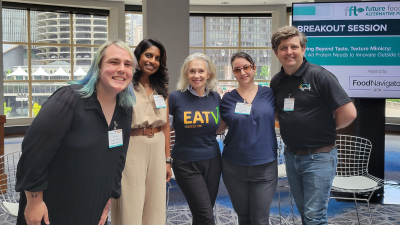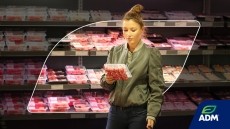Future Food Tech Alternative Proteins
Livestock Labs is creating stable cell lines with desirable characteristics to advance commercial production of cultivated meat
Livestock Labs, which recently pitched at the Future Food Tech Alternative Proteins Summit in Chicago, uses advanced genetic engineering, data analytics and machine learning to develop cell lines for the cultivated meat sector, which it says could significantly reduce cost, time and uncertainty for stakeholders in this rapidly evolving industry.
“What we are trying to do at Livestock Labs is really become the first company that offers off-the-shelf capable, process-ready cell lines – to almost democratize the industry,” so that companies that do not have cell-line development teams in house can still contribute to the cultivated meat category, Livestock Labs Co-Founder Andrew Sayles told FoodNavigator-USA.
He explained that currently companies have access to a “a lot of cell lines,” but that they are “really just starter material” that require a cell-line development team to characterize and optimize those cells to their individual processes.
“A lot of companies are working in silos,” and are creating their own cell lines, bioreactors, scaffolding, media and other components, which was necessary when cultivated meat was just beginning because there were no supply chain lines, he said.
However, he added, “now, what we are seeing is an era of specialization. We are starting to see companies just focus on one specific task and master that.”
For example, he said, some companies only focus on bioreactors, scaffolding or medium formulation.
“There are companies that are offering cell lines and giving people a head start on what they used to have to do, which is go to a veterinarian and extract some tissues samples and start from day one,” he said.
But, he added, none of those lines are ready-to-use in the sense that they all must be tailored – something that Livestock Labs is doing.
‘We do not want to offer just a one-to-one chicken’
One way that Livestock Labs is able to offer full characterized cell lines that can be “plugged in” to cultivate meat companies’ processes is by using genetic engineering.
“This is one of the best technologies of our time, and you can really create things with precision. So you are able to optimize and characterize the cells exactly how you want,” so that they also are more stable and durable with less genetic drift and fewer natural mutations than a natural cell line may have, Sayles said.
Genetic engineering also will allow Livestock Labs and the companies that use its cell lines to create cultured meat that is healthier than its conventional counterpart.
“We do not want to offer just a one-to-one chicken that is cultured meat chicken compared to conventional chicken. We want to offer a piece of meat that is tastier and more nutritious and just all around a better experience,” Sayles said.
For example, genetic engineering allows Livestock Labs and its partners to create bacon without trans fat or with better-for-you omega-3 fatty acids, he said.
Fully characterized, patented cell lines coming in early 2026
Currently, Livestock Labs is focused on cell lines from cows, pigs, chickens and sheep, but as the academic literature develops, Sayles said the company would love to expand into seafood and exotic species.
“We are currently planning on launching or at least piloting our first cells as early as Q1 of next year and then launching up to 24 cell lines covering those four species – all optimized, fully characterized, patented and GRAS certified as early as January 2026 for the industry,” he said.
To get there, the company will need “a little bit of upfront funding to really engineer those cell lines,” but not nearly as much as other aspects of the cultivated meat industry requires, Sayles said.
“Creating cell lines is capital efficient. All you really need is a small team to service the industry. You do not need CapEx with the bioreactors or the hundreds of thousands of liters of media,” he said.
Looking forward, he added, he is “very optimistic about the future of this industry and the future of food in general.”
He explained, once players in the cultivated meat space “remove the silos” and embrace collaboration, the conversation around cultivated meat will quickly evolve to include product differentiation around taste and nutrition – which are qualities that consumers and investors can understand.















